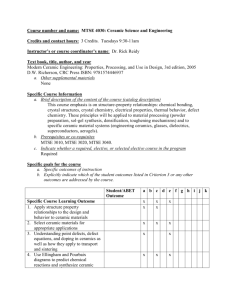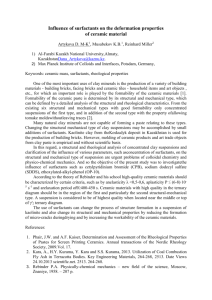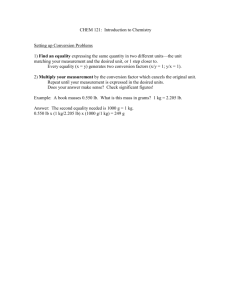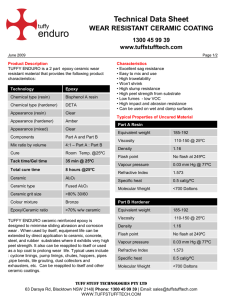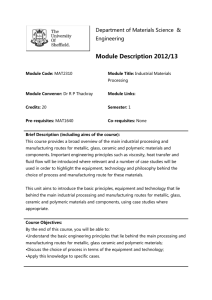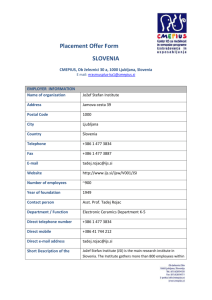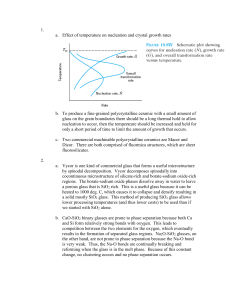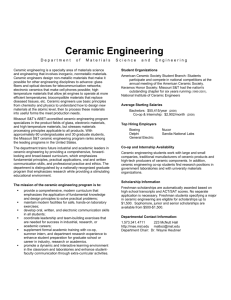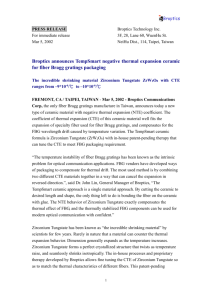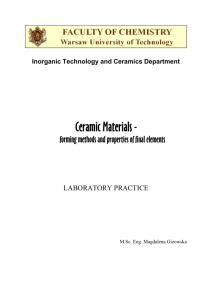Instructions for Preparation of “Biomaterials 2006” Abstract
advertisement
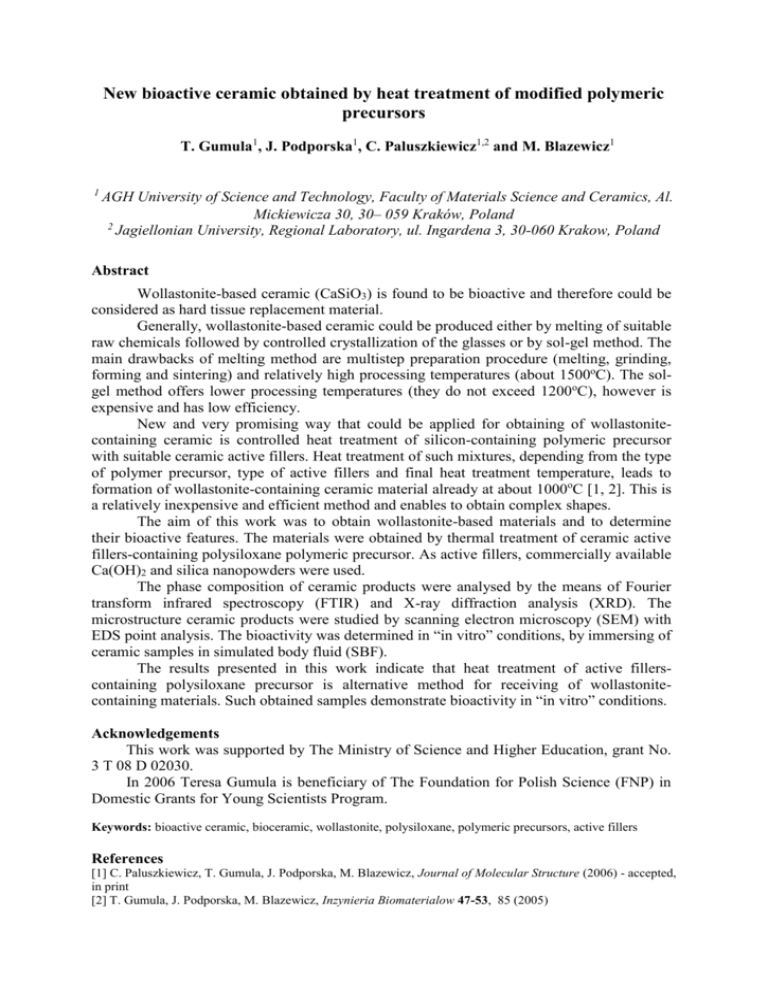
New bioactive ceramic obtained by heat treatment of modified polymeric precursors T. Gumula1, J. Podporska1, C. Paluszkiewicz1,2 and M. Blazewicz1 1 AGH University of Science and Technology, Faculty of Materials Science and Ceramics, Al. Mickiewicza 30, 30– 059 Kraków, Poland 2 Jagiellonian University, Regional Laboratory, ul. Ingardena 3, 30-060 Krakow, Poland Abstract Wollastonite-based ceramic (CaSiO3) is found to be bioactive and therefore could be considered as hard tissue replacement material. Generally, wollastonite-based ceramic could be produced either by melting of suitable raw chemicals followed by controlled crystallization of the glasses or by sol-gel method. The main drawbacks of melting method are multistep preparation procedure (melting, grinding, forming and sintering) and relatively high processing temperatures (about 1500oC). The solgel method offers lower processing temperatures (they do not exceed 1200oC), however is expensive and has low efficiency. New and very promising way that could be applied for obtaining of wollastonitecontaining ceramic is controlled heat treatment of silicon-containing polymeric precursor with suitable ceramic active fillers. Heat treatment of such mixtures, depending from the type of polymer precursor, type of active fillers and final heat treatment temperature, leads to formation of wollastonite-containing ceramic material already at about 1000oC [1, 2]. This is a relatively inexpensive and efficient method and enables to obtain complex shapes. The aim of this work was to obtain wollastonite-based materials and to determine their bioactive features. The materials were obtained by thermal treatment of ceramic active fillers-containing polysiloxane polymeric precursor. As active fillers, commercially available Ca(OH)2 and silica nanopowders were used. The phase composition of ceramic products were analysed by the means of Fourier transform infrared spectroscopy (FTIR) and X-ray diffraction analysis (XRD). The microstructure ceramic products were studied by scanning electron microscopy (SEM) with EDS point analysis. The bioactivity was determined in “in vitro” conditions, by immersing of ceramic samples in simulated body fluid (SBF). The results presented in this work indicate that heat treatment of active fillerscontaining polysiloxane precursor is alternative method for receiving of wollastonitecontaining materials. Such obtained samples demonstrate bioactivity in “in vitro” conditions. Acknowledgements This work was supported by The Ministry of Science and Higher Education, grant No. 3 T 08 D 02030. In 2006 Teresa Gumula is beneficiary of The Foundation for Polish Science (FNP) in Domestic Grants for Young Scientists Program. Keywords: bioactive ceramic, bioceramic, wollastonite, polysiloxane, polymeric precursors, active fillers References [1] C. Paluszkiewicz, T. Gumula, J. Podporska, M. Blazewicz, Journal of Molecular Structure (2006) - accepted, in print [2] T. Gumula, J. Podporska, M. Blazewicz, Inzynieria Biomaterialow 47-53, 85 (2005)
